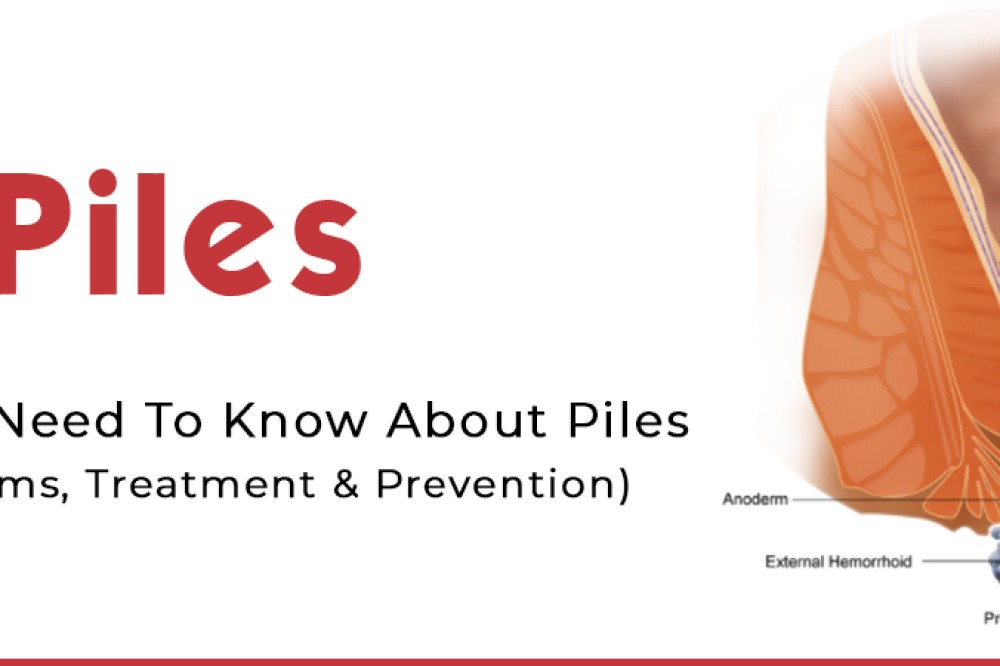
Everything You Need To Know About : Piles
Otherwise known as Hemorrhoids, Piles or Hemorrhoids are stated as the collection of inflamed tissues in the anal canal. This might include blood vessels, muscle, support tissue and elastic fibres.
A significant number of people suffer from the problem of piles. However, the symptom might not always be obvious. Noticeable symptoms of Hemorrhoids can be seen in at least 50% of individuals in the United States before turning 50 years of age.
This write-up will throw light on the problem of hemorrhoids or piles, its causes, diagnoses, grade and its treatment along with the effects it has on the human body.
Quick Facts on Hemorrhoids or Piles
- Piles or hemorrhoids are designated as a condition when the tissues and veins are inflamed and swollen
- The size of piles differs and can be found inside or outside the anus
- The health conditions contributing to the occurrence of Piles include chronic constipation and diarrhoea, pregnancy, lifting heavy weights or straining while passing stool.
- The diagnosis of Piles can be usually done on examination by a doctor
- A scale of I to IV is used to grade hemorrhoid where grade III or IV may require surgery necessary
What are Piles?
Piles of Hemorrhoids are the collection of swollen or inflamed tissues in the anal canal.
They can range in various sizes and can be internal or external to the anus.
Generally, internal piles are situated between 2 to 4 centimetres above the point from the anus opening with them being the most common type. The external piles can be located on the outside of the anal area.
Symptoms of Piles
Usually, piles symptoms are not serious and can be naturally resolved normally after a few days. The symptoms can be as follows:
- Hard and painful lump felt around the anus containing coagulated blood. Piles with blood are referred to as thrombosed external hemorrhoids.
- A feeling of bowel being full even after passing a stool
- After a bowel movement, visibility of bright red blood
- Itching, redness and soreness around the anus area
- Painful passing of stool
A more severe condition of piles can include:
- Excessive anal bleeding
- Infection
- Faecal incontinence
- Anal fistula
- Strangulated hemorrhoids
Piles are classified into four grades as follows:
1. Grade I: Grade I piles are small inflammations that are not visible which are generally inside the anus lining.
2. Grade II: These are inside the anus but are larger than grade I piles. However, they might be pushed out while passing stool but usually return unaided.
3. Grade III: Also known as prolapsed hemorrhoids, they might be felt hanging from the rectum and can be seen outside the anus. However, they can be re-inserted easily.
4. Grade IV: This form of piles is larger compared to other grades and appear outside anus. They require treatment, as they cannot be pushed back.
External piles can lead to the formation of a small lump on the outside edge of the anus which can be very itchy and painful in case of blood clot development. In the case of thrombosed external piles, immediate medical treatment is needed.
Here are the causes of Piles
Increased pressure in the area of the lower rectum can lead to piles or hemorrhoids.
There may be swelling or bulging in the blood vessels around the anus and in the rectum which might stretch under pressure and form piles. This can happen due to:
- Chronic diarrhoea
- Chronic constipation
- Pregnancy
- Lifting heavyweights
- Straining while passing stool
Moreover, the tendency of development of Piles can also be inherited and is proportional to the increase in age.
Explore the diagnosis of Piles
Physical examination by a doctor is usually used to diagnose piles. The anus of the person having suspected piles is examined by the doctor.
The doctor might ask you a few questions such as:
- What is the colour of the stools?
- Any close relatives with piles problem
- The occurrence of mucus or blood in the stools
- Recent changes in the bowel movements
- Any concern of recent weight loss
In the case of internal piles, the doctor may resort to a digital rectal examination or using a proctoscope. A proctoscope is used to examine the anal canal closely through a hollow tube fitted with a light. During this process, from inside the rectum, the doctors can take a small tissue sample.
This is then sent for analysis to the lab.
In certain case, the physician might recommend Colonoscopy if the patient has signs and symptoms of piles which indicates other digestive system diseases or portrays any risk for colorectal cancer.
Available treatments for Piles
In a significant number of the cases, the problem of hemorrhoids or piles gets resolved on their own without requiring any treatment. However, certain treatments can significantly assist in reducing the itching and discomfort which the majority of people experience due to pile.
1. Diet
One of the prominent causes of Piles is the straining which happens during the bowel movements. Constipation can lead to excessive straining; therefore, a healthy change in the diet can leave to regular and softer stools. A change in diet might involve the intake of more fibre like fruits and vegetables and eating bran-based breakfast cereal. Also, it is often recommended by the doctor to the patient to enhance their water consumption. Another recommendation is to avoid caffeine intake.
2. Bodyweight
Loss of body weight can result in decreasing the incidence and severity of hemorrhoids or piles.
A doctor's advice for preventing piles is exercising and avoiding straining while passing stools. Exercising is deemed as one of the primary therapies for treating and/ or preventing piles.
1. OTC (Over-the-counter) medications
These medications are available online or over-the-counter which include ointments, creams, painkillers and pads. They are useful for soothing the redness, inflammation and swelling around the anus.
The OTC remedies can only help with the symptoms but do not to cure piles. The medications shall not be used for more than 7 days continuously as it can lead to further irritation of the area and skin thinning. Never use two or more medications simultaneously unless prescribed by a doctor.
2. Laxatives
If any individual suffers from constipation, usually, laxatives are prescribed by a doctor.
This enables the stools to pass more easily and reduce the pressure on the lower colon.
3. Corticosteroids
It can help in reducing pain and inflammation.
1. Banding
An elastic band is placed around the base of piles by the doctor that cuts of the blood supply. A few days later, hemorrhoids fall off. This treatment is effective for low-grade hemorrhoids.
2. Sclerotherapy
To shrink the hemorrhoids, medicine is injected which leads to the hemorrhoids eventually desiccate. An alternative to banding, this is effective for grade II and III hemorrhoids.
3. Infrared Coagulation
Also called infrared light coagulation, this device is used to burn hemorrhoid tissue. This technique is effective in grade I and II hemorrhoids.
4. Hemorrhoidectomy
The excess tissue is surgically removed which bleeds. This is done in several ways including the local anaesthesia and sedation combination, a spinal anaesthetic or even general anaesthetic. This is the most effective alternative but with a certain risk of complications such as urinary tract infections or difficulty in passing stools.
5. Hemorrhoid stapling
Blood flow is blocked to the tissues having hemorrhoids but this is usually less painful than Hemorrhoidectomy. Although, this can result in an increased risk of hemorrhoid recurrence and rectal prolapsed, in this the part of the rectum is pushed out of the anus.
- A change in lifestyle
Generally, the initial recommendation of a doctor would be to make changes in your lifestyle for managing the problem of Piles such as diet and body weight. - Medications
Individuals can consider several medicinal options available for leading to more manageable symptoms of piles. - Surgery options
Usually, one in ten people having piles or hemorrhoids ends up having surgery.
Hemorrhoid or piles can be devitalizing and painful. However, they do not model any serious threat to health alongside the can be self-managed apart from grade III or IV. In the case of the development of complications, like fistula, the situation can worsen.
The surgical alternatives for III or IV grade piles are usually outpatient procedures and require minimal recovery time for the patient.







